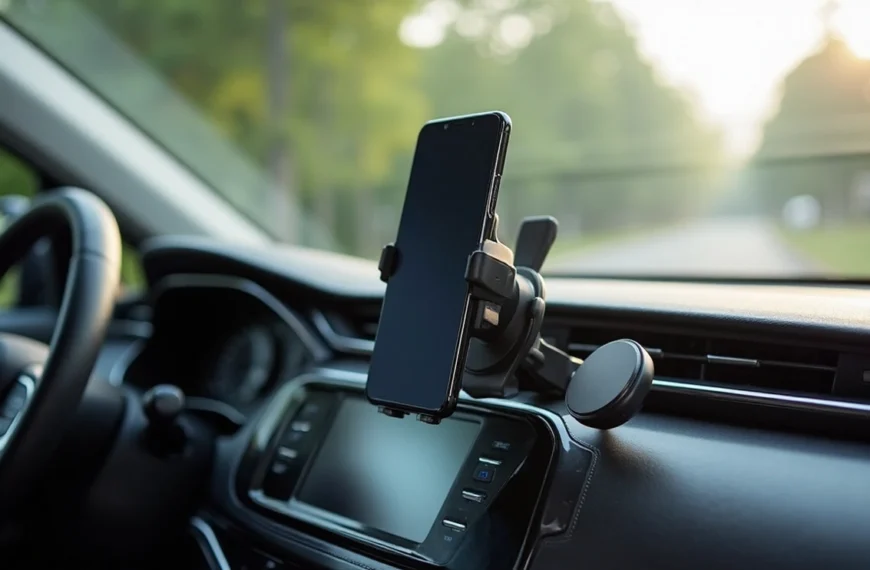Ecommerce Industry Trends: The retail landscape keeps evolving as ecommerce global sales surpassed $4.1 trillion in 2024. These numbers are a big deal as it means that sales will reach $6.4 trillion by 2029. The blockchain technology market tells a similar story. It will grow from $17 billion in 2023 to $943 billion by 2032, which shows quick adoption in many sectors.
Today’s ecommerce shows how buyer habits and technology use are transforming. Mobile shopping leads the charge and will make up 62% of all online purchases by 2027. Brands that create tailored experiences see better customer loyalty, with 72% of shoppers sticking around longer. Payment options play a crucial role too. About 13% of buyers leave their carts behind when they can’t pay the way they want.
This piece dives into what leading brands actually do to prepare for 2025. They focus on AR experiences, AI automation and social commerce strategies. The subscription economy keeps growing, with U.S. ecommerce subscriptions expected to hit $43 billion in 2024. Modern shoppers have new expectations too – 86% of them now call it standard to get their packages within two days.
Topic: Ecommerce Industry Trends
Technology trends shaping the future of ecommerce
Topic: Ecommerce Industry Trends
Image Source: LinkedIn
The digital world of online shopping continues to evolve rapidly in 2025. New technologies are blending physical and digital retail experiences. These advances have become crucial for brands that want to stay ahead of their competition.
Augmented reality and virtual shopping
Virtual shopping has changed the game by creating an online experience that feels just like shopping in a real store. Brands that use 3D product models and AR technology see their conversion rates jump by 94% compared to products without these features. Big retailers have jumped on board – Nike lets customers try on shoes using AR, while IKEA’s virtual showrooms help shoppers see how furniture looks in their homes before buying. This technology helps companies expand beyond geographical limits and cuts down return rates because customers can check out products before making a purchase.
AI for marketing, visuals, and automation
AI has become the life-blood of e-commerce operations. Companies that adopt AI business strategies add 10-12% more revenue. About 84% of e-commerce businesses now put AI at the top of their priority list. AI makes a big difference in customization – AI-driven marketing is 10-30% more efficient and budget-friendly while boosting customer acquisition by 3-5%. AI-powered image recognition also powers visual search engines that can identify products from pictures. The global AI-powered e-commerce market should hit $16.80 billion by 2030.
Voice commerce and smart assistants
The voice commerce market was worth $42.75 billion in 2023 and should grow at 24.6% through 2030. Smart speakers led this growth with 44% of the market share in 2023. Wearable devices with voice shopping features are growing even faster at 26.5%. Voice shopping makes buying easier through natural conversations, and 49% of US consumers now use voice search when they shop. Major retailers like Walmart, Best Buy, and Starbucks have added voice platforms so customers can look up products, place orders, and pay easily.
Marketing strategies that are working in 2025
Topic: Ecommerce Industry Trends
Image Source: VDomin8 Marketers
“In the modern world of business, it is useless to be a creative, original thinker unless you can also sell what you create.” — David Ogilvy, Co-founder of Ogilvy, widely regarded as the ‘Father of Advertising’
Short-form video and influencer content
Influencer marketing leads digital strategies today. US sponsored content spending will exceed $10 billion in 2025. The growth rate of influencer marketing outpaces social ad spending by three times. Videos between 31-60 seconds remain the most effective content format. This format grabs attention quickly in today’s fast-scrolling world.
LinkedIn now offers 60-second videos for professional advice. TikTok’s engagement-driven algorithm has made it the fourth most popular social commerce platform. Brands broaden their strategies constantly. Live streaming leads content strategy for 52.4% of brands. This allows them to interact with their audience in real time.
Social commerce and in-app shopping
Social commerce has taken off. Global spending will reach $266.92 billion by the end of 2025. TikTok Shop stands out as a soaring win with its smooth in-app checkout that makes buying easier. New data shows 43% of TikTok users find new brands on the platform. About 51% say TikTok helps them decide what to buy.
Big brands see amazing results. Some report their live shopping GMV increased 7 times in just 45 days. This year, 59% of marketers will work with more influencers than they did in 2024.
Authentic storytelling and brand transparency
Trust matters more than ever in ecommerce. Brand transparency influences purchase decisions for over 90% of consumers. Transparent brands earn remarkable loyalty. About 94% of consumers stick with brands that stay transparent. Even more impressive, 56% promise lifetime loyalty to fully transparent companies.
Brand storytelling creates deeper connections with customers. It goes beyond product features to share brand values and purpose. Companies that tell genuine stories build emotional bonds that create loyal brand advocates.
Topic: Ecommerce Industry Trends
What consumers expect from ecommerce brands today
Customer priorities now determine ecommerce success. Their expectations have grown faster beyond simple online shopping conveniences. Brands competing for attention in crowded marketplaces must understand these core expectations to stimulate sustainable growth.
Individual-specific experiences in a variety of channels
Modern shoppers just need experiences customized to their unique priorities whatever way they connect with brands. Traditional multichannel approaches create disconnected experiences, while omnichannel personalization weaves all touchpoints into a unified trip. This strategy substantially affects the bottom line. Higher conversion rates and product sales link directly to personalized shopping experiences.
Research shows that 71% of consumers now expect personalized interactions, and 76% feel frustrated when brands don’t meet these expectations. Yes, it is worth noting that personalization leaders were 71% more likely to report improved customer loyalty. These individual-specific trips, with targeted recommendations and offers, substantially boost purchase likelihood as customers see products that match their unique tastes.
Topic: Ecommerce Industry Trends
Green products and packaging
Environmental awareness has pervaded consumer decision-making in retail sectors. 88% of consumers think about sustainability when making purchasing decisions, and 66% say it matters even more since the pandemic. Customer surveys show 64% of today’s consumers rank sustainability as one of the most important value drivers when buying products.
Buyers now review brands based on specific green practices. The numbers tell the story – 47% prioritize recycled packaging, 41% value eco-friendly shipping practices, and 30% seek out “green” brands. Most consumers (80%) will pay more for sustainable products, with some willing to spend up to 9.7% extra.
Simple and flexible payment options
Payment flexibility has become a vital conversion factor. Cart abandonment rates show 21% of customers leave due to complicated checkout processes. Today’s shoppers expect various payment choices from credit cards to innovative alternatives. Digital wallets have gained popularity, with 53% of US adults using them more often than traditional payment methods.
Buy Now, Pay Later (BNPL) shows this move clearly, with estimates pointing to 1,200% growth by 2024. Young shoppers especially like this option, as BNPL adoption among Gen Z has grown 600% since 2019. Flexible payment options help brands connect with customers’ needs – a key approach in today’s personalization-focused marketplace.
How leading brands are building future-ready ecommerce models
Retailers must reimagine their tech foundations to compete in today’s complex marketplace. Smart brands have moved away from old methods. They welcome structural innovations that boost their agility and response times.
Composable commerce and agile platforms
Composable commerce brings a fundamental change to ecommerce platform design. IT teams have embraced this shift – 46% already use composable commerce solutions and 43% plan to adopt them. This modular system lets businesses pick and blend different technologies. Companies can create custom solutions instead of using one-size-fits-all platforms. The results speak for themselves – businesses see up to 60% higher conversion rates after implementation. Teams can adapt to market shifts and customer needs without rebuilding entire systems.
B2B ecommerce with B2C-level UX
B2B buyers want the same user-friendly experiences they get as consumers. Gartner suggests 80% of B2B interactions will happen online by 2025. Simple checkout tops the priority list – 32% of B2B buyers call it their most important online buying feature. The demand for better mobile experiences is clear, with 78% of global B2B buyers wanting improvements from their suppliers. Successful B2B platforms now feature one-click checkout, smart search tools, and designs that work on any device.
Subscription-based business models
Subscription ecommerce will reach $904.28 billion by 2026. Brands use this model to lock in steady revenue and build stronger customer bonds. More than half of online shoppers subscribe to at least one ecommerce service. Smart companies use three main approaches: replenishment subscriptions for basics, curated services with customized product picks, and access subscriptions with special member perks.
Quick commerce and fast delivery logistics
Quick commerce delivers products in 30 minutes or less, changing how customers shop. This market hit $195.01 billion in 2025 and will likely double to $8.7 billion in Europe by 2027. Half of quick commerce customers use these services for their weekly shopping. Prices run 17% higher than regular stores, yet 41-45% of customers think a $2 fee is fair for 30-minute delivery.
Conclusion
You might like: Choosing the Right HVAC System Size for Your Home: A Step-by-Step Guide
The digital world keeps changing at an unprecedented pace. Technological advancements and consumer behaviors shape this transformation. Smart brands see this development as both a challenge and a chance for substantial growth. Today’s customers expect immersive shopping through AR and virtual environments. They want customized interactions powered by AI and continuous voice commerce capabilities. These technologies have moved beyond experiments to become competitive necessities.
Modern consumption habits have changed marketing strategies. Short-form video content, mutually beneficial alliances with influencers, and social commerce drive engagement effectively. Authentic storytelling builds trust that matters. These approaches work because they match how people find and interact with products online.
Consumer expectations drive much of this state-of-the-art technology. Studies show that 71% of shoppers demand customized experiences across all channels. About 88% call sustainability important in their buying decisions. Many customers leave their carts when they don’t see enough payment options. Successful brands know these expectations aren’t optional – they’re fundamental business requirements.
Evidence points to future-ready ecommerce models that depend on adaptable structures. Composable commerce lets companies adapt to market changes fast. B2B platforms need B2C-level user experiences now. Subscription models create steady revenue, while quick commerce services have altered the map of delivery expectations.
The ecommerce world of 2025 rewards agility, authenticity, and user-focused design. Brands that focus on these values while using strategic tech solutions will thrive in an increasingly digital marketplace. The gap between what customers want and what ecommerce can deliver keeps shrinking. This creates exceptional opportunities for brands ready to grow with their customers.
FAQs
Topic: Ecommerce Industry Trends
Q1. What are the key technological trends shaping ecommerce in 2025? The main technological trends include augmented reality for virtual shopping experiences, AI-powered marketing and automation, and voice commerce through smart assistants. These innovations are enhancing customer experiences and driving significant growth in online retail.
Q2. How are successful brands adapting their marketing strategies for 2025? Top brands are focusing on short-form video content, leveraging influencer partnerships, embracing social commerce platforms, and prioritizing authentic storytelling and brand transparency to connect with consumers more effectively.
Q3. What do consumers expect from ecommerce brands in 2025? Consumers now demand personalized experiences across all channels, sustainable products and packaging options, and convenient, flexible payment methods. Meeting these expectations has become crucial for brands to maintain customer loyalty and drive sales.
Q4. How are leading ecommerce brands preparing for the future? Forward-thinking brands are implementing composable commerce platforms for greater flexibility, enhancing B2B ecommerce with B2C-level user experiences, exploring subscription-based business models, and investing in quick commerce and fast delivery logistics.
Q5. What role does sustainability play in ecommerce trends for 2025? Sustainability has become a major factor in consumer purchasing decisions, with 88% of shoppers considering it important. Brands are responding by offering eco-friendly products, sustainable packaging, and green shipping practices to meet this growing demand.









![No Win No Fee Lawyers: The Hidden Truth About Settlement Cuts Legal representation through no win no fee lawyers gives clients a way to fight cases without paying anything upfront. Many clients don't know that these services take a big chunk of money after winning the case. Lawyers usually take 25% to 40% of what you win as their contingency fee. The amount lawyers take from settlements can add up fast. A $100,000 settlement means your attorney gets $30,000 if they charge a 30% fee after winning your case. Your solicitor's cut might be £10,000 from a £30,000 compensation award, based on your agreement percentage. This payment model stays pretty much the same for no win no fee lawyers in different places, though percentages can change. This piece breaks down what you need to know about contingency fee deals. You'll learn about standard fee ranges, extra costs beyond the basic fee, and times when this payment setup might not work in your favor. Smart clients should think over these money matters before signing up with a lawyer to make better choices about their legal help. What No-Win No-Fee Really Means Image Source: Express Legal Funding A no-win no-fee arrangement, also called a Conditional Fee Agreement, changes the way people get legal help. This payment approach removes the need to pay legal fees upfront and creates a partnership between clients and their attorneys. How contingency fees work No-win no-fee agreements are based on contingency fees. Lawyers get paid only when they win compensation for their clients. Most lawyers take between 25% and 40% of the final amount, based on how complex the case is and where it's filed. Lawyers take their cut after winning the case. To name just one example, see a case where a lawyer wins £30,000 in compensation with a 33% fee - they would receive £10,000. On top of that, some law firms use sliding scales where they charge less for quick settlements and more if the case goes to trial. The law requires a written agreement before any work starts. This paperwork spells out the lawyer's percentage, what costs you'll need to cover, and other key details. What happens if you lose the case The meaning behind "no-win no-fee" is clear - losing your case means you won't pay your lawyer anything. All the same, you should know about a few money-related details. You won't owe your lawyer when you lose, but some deals might make you pay for court fees, expert witnesses, or other case expenses. The other side could also ask you to pay their legal costs. Many lawyers suggest getting "After Event" insurance to protect their clients. These policies cover any costs if you lose your case, which makes the no-win no-fee setup much safer. Why lawyers offer this model Lawyers want to make legal help available to more people, so they offer these payment plans. This setup helps people who don't have much money take legal action when they have valid claims. The payment structure motivates lawyers to work hard. They only get paid by winning cases, which pushes them to get the best results possible. Lawyers carefully assess each case before taking it on a no-win no-fee basis. They usually accept cases that have a good chance of winning, since they put in lots of time and resources without any guaranteed payment. The Real Cost: How Much Do Lawyers Take from a Settlement Image Source: Greiner Law Corp. The true cost of no-win no-fee legal representation becomes clear once we look at contingency fees. Many clients feel surprised to see a big chunk of their settlement checks going to their attorney's fees. Typical percentage ranges (25%–40%) No win no fee lawyers typically ask for 25% to 40% of the total settlement amount. Personal injury attorneys usually take 33.3% (one-third) of the awarded compensation[101]. Lawyers and clients agree on this percentage before any work starts on the case. Several factors shape the final percentage. Your chances of winning, case complexity, and the work to be done play key roles in determining the attorney's cut. Some areas have laws that cap the maximum contingency fees for specific types of cases. Sliding scale based on case complexity Law firms often use a tiered fee system that changes with the case stage and complexity. This scale rewards quick settlements while paying attorneys fairly if more work becomes needed. The fee might start at 30% if the case settles before lawsuit filing. This number could climb to 35% after filing or reach 40% if the case goes to trial. Law firms often group cases by complexity: 10%-20%: Simple cases with straightforward settlements 25%-35%: Typical personal injury cases 35% and above: Complex cases requiring extensive resources Examples of payout breakdowns These ground examples show how fees affect settlements: A $15,000 settlement with a 33.3% contingency fee.pdf) puts $5,000 in the attorney's pocket, leaving $10,000 for the client. Similarly, from a $100,000 settlement with a 33% fee, the attorney gets $33,000 while the client receives $67,000[102]. Complex cases tell a different story. A $100,000 settlement with a 30% fee plus $5,000 in extra costs leaves $65,000 for the client after all deductions. These fees substantially change the client's final payout. Hidden Costs You Might Not Expect Image Source: Nelson Personal Injury Lawyers Beyond percentage-based fees, clients often feel surprised by extra costs that can reduce their final compensation by a lot. These hidden costs show up in the fine print of no-win no-fee agreements. You should think over these details before signing. Court filing and expert witness fees Legal proceedings come with unavoidable court filing fees. These charges differ by jurisdiction. They usually range from $30 for small claims to several hundred dollars for complex civil lawsuits. Expert witnesses can be expensive, with hourly rates ranging from $150 to $1,000 based on their credentials and testimony complexity. Expert witnesses charge more for court appearances than consultation work because of added pressure and prep time. Clients might still need to pay experts for their prep work even if the case settles before trial. Medical report and investigation costs Medical documentation is a vital part of many legal claims. These costs include fees to release medical records, create specialized reports, and prepare documents. Investigation costs cover evidence gathering, police reports, witness interviews, and other fact-finding work needed to build a strong case. Of course, some firms say they'll cover these expenses upfront, but clients don't completely avoid these costs. When these costs are deducted from your compensation Law firms take these expenses from the settlement amount before they calculate their percentage fee, though each firm handles this differently. Some lawyers subtract these costs after figuring out their contingency fee, which changes how much money clients end up with. Most firms pay case-related costs during the process and get their money back from the settlement. The defendant usually pays most simple legal costs and disbursements in successful cases, but not always everything. Insurance protects clients from costs in unsuccessful claims at many law firms, but this protection isn't guaranteed. Clients should review their agreements carefully since they might still need to pay specific expenses even if they lose their case. When No-Win No-Fee Might Not Be the Best Option Contingency fee arrangements give many people access to justice. However, this payment model doesn't always work in a client's best interests. Knowing these limitations helps clients make better decisions about their legal representation. Cases with unclear liability Lawyer no win no fee arrangements work best in cases where fault is clear. We assessed the probability of success before taking contingency cases. Lawyers might turn down cases if there isn't enough evidence of the other party's negligence or if liability isn't certain. Cases with multiple responsible parties create more challenges. The situation gets complicated fast when several parties share liability. Lawyers are less likely to take these cases on contingency. They need to be confident they can prove the other party's negligence before accepting a case. Low-damage or low-payout claims Small claims often don't work well with the contingency model, even with real injuries. Cases that have minimal injuries or limited financial damages might not bring enough compensation to cover legal costs. The potential settlement needs to be big enough to pay for investigations, witness interviews and court fees. Personal injury lawyers often turn down cases where the "compensation potential" is too small. This doesn't mean the claim isn't valid - it just means the economics don't add up for a contingency arrangement. Situations where hourly billing may be better Hourly billing has clear advantages in certain cases. Clients see exactly what they're paying for - every hour worked and task completed. This model works well for cases that need lots of attention but don't have clear financial outcomes. Complex litigation with opposing parties works better with hourly billing and a retainer fee. Clients have more control over their case and don't feel pressured to settle quickly. Cases that need extensive preparation but have uncertain outcomes fit the hourly model better. Lawyers can spend the time needed without worrying about contingency limits. This approach often leads to better representation, especially for complex legal issues that need special expertise. Conclusion Understanding the Full Picture Before You Sign No-win no-fee arrangements offer legal representation without upfront costs. Of course, this seems attractive at first glance. In spite of that, you need to think about how these agreements can affect your final compensation. Legal fees usually range from 25% to 40% of your settlement - but that's just the start. You'll face more deductions like court filing fees, expert witness costs, and charges for medical documentation. What looks like a "free" service ends up taking a big chunk of your compensation to cover legal expenses. These arrangements work best in specific situations - cases with obvious liability, substantial damages, and solid evidence. If you have a low-value claim or complex liability issues, traditional hourly billing might serve you better. Without doubt, you should ask for clear explanations of all possible costs before signing anything. Read the fine print closely, especially when you have to deal with expenses in unsuccessful cases. Ask to see sample settlement breakdowns that show all deductions. This helps you picture what you might actually take home. Your choice to go with a no-win no-fee arrangement depends on your situation. This model helps if you don't have money to pursue valid claims. But if you have a strong case and enough funds, other fee structures might let you keep more of your compensation. Whatever payment model you choose, knowing exactly how much lawyers take from settlements helps you make better decisions. This knowledge lets you approach legal representation with real expectations and better control over your money. FAQs Q1. What percentage of a settlement do no-win no-fee lawyers typically take? No-win no-fee lawyers typically charge between 25% to 40% of the final settlement amount as their contingency fee. The exact percentage often depends on the complexity of the case and the stage at which it is resolved. Q2. Are there any hidden costs in no-win no-fee arrangements? Yes, there can be additional costs beyond the lawyer's percentage fee. These may include court filing fees, expert witness costs, medical report expenses, and investigation costs. These expenses are usually deducted from the settlement amount before or after the lawyer's fee is calculated. Q3. What happens if I lose my case in a no-win no-fee arrangement? If you lose your case, you generally won't have to pay your lawyer's fees. However, you might still be responsible for certain expenses like court costs or the opposing party's legal fees. Many lawyers offer insurance to protect clients from these potential costs in case of an unsuccessful claim. Q4. When might a no-win no-fee arrangement not be the best option? No-win no-fee arrangements may not be ideal for cases with unclear liability, low-value claims, or complex legal issues requiring extensive preparation. In these situations, traditional hourly billing might be more appropriate and potentially more cost-effective for the client. Q5. Can I negotiate the percentage a lawyer takes from my settlement? Yes, the contingency fee percentage is often negotiable. It's typically agreed upon and formalized in writing before the lawyer begins working on your case. Don't hesitate to discuss the fee structure with your lawyer and ask for a detailed breakdown of potential costs and deductions.](https://consumersweek.com/wp-content/uploads/2025/06/No-Win-No-Fee-Lawyers-The-Hidden-Truth-About-Settlement-Cuts-870x570.webp)



